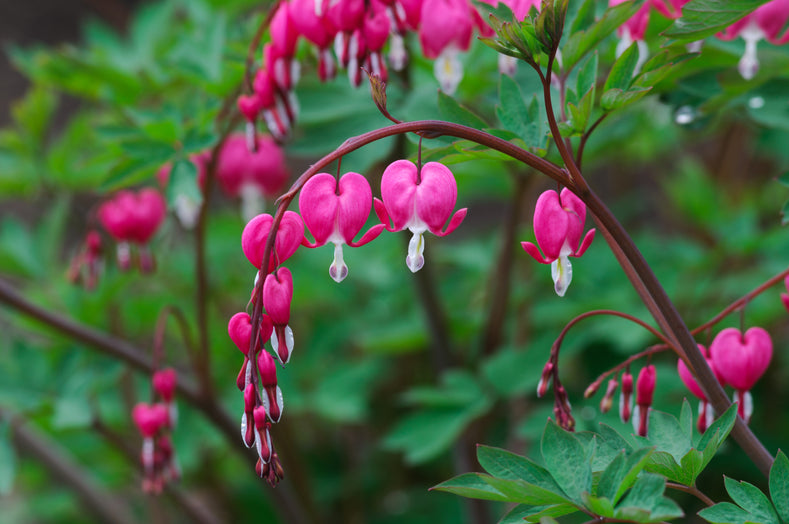Dicentras, commonly known as "Bleeding Heart," get their name from their plump, heart-shaped flowers. Dicentras adore the shade and bloom in spring. These flowers come in beautiful pink, purple, red, and white colours, reaching mature heights ranging from 50 to 100 centimetres.
How to Grow Dicentras
Dicentras thrive when planted in rich and well-draining soil in a shaded or partially shaded area. If your soil needs enrichment, add compost before planting. Start by digging holes large enough to fit in all of the roots. Space holes 45 to 75 centimetres apart (larger varieties might need up to 90cm) and plant into the ground with the roots pointing downwards and the growing points 2.5 centimetres below the soil level. Fill the surrounding soil and firmly pat it down around the plants. Water thoroughly after planting and soak the soil to settle around the roots.
For container planting, use well-draining and humus-rich potting soil. Select large containers that are big enough to accommodate the mature size of the Dicentras, ensuring they have good drainage holes.

How to Care for Dicentras
Water as needed during active growth periods, providing around 2.5 centimetres of moisture per week. As the Dicentra begins to yellow and wither away, the foliage may be cut back to the ground. Do not remove the foliage before it turns yellow/brown, as this is the time the plant will store food reserves for next year's growth.
You can fertilise regularly to encourage growth. When the foliage starts emerging in spring, add a time-release fertiliser into the soil around the plant, along with extra compost. This can give you more blooms that are longer-lasting. Keep in mind that Dicentras will typically reach their mature size by their third or fourth year.
Additional Care Tips:
- Apply a layer of organic mulch around the base of the plants to help retain moisture and suppress weeds.
- Protect Dicentras from strong winds, as their delicate stems can be prone to breakage.
- Monitor for pests such as slugs and snails, and take appropriate measures to control them organically.
- In autumn, cover the area around the plants with a layer of compost to provide additional nutrients during the dormant period.
Follow these steps and you’ll grow beautiful Dicentras with charming flowers that will bring life and colour to your shaded spaces.

